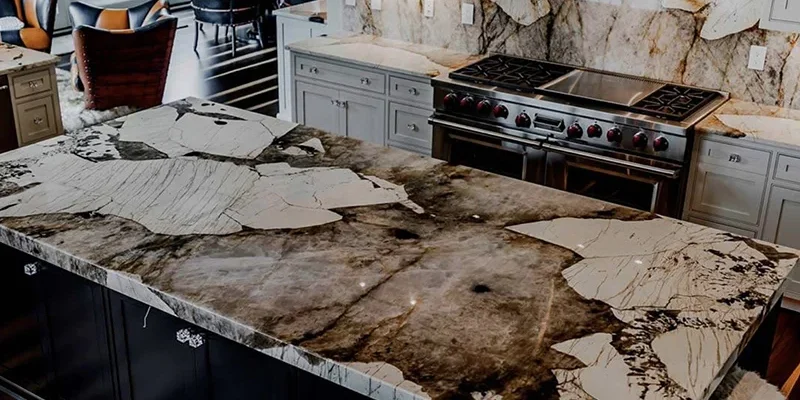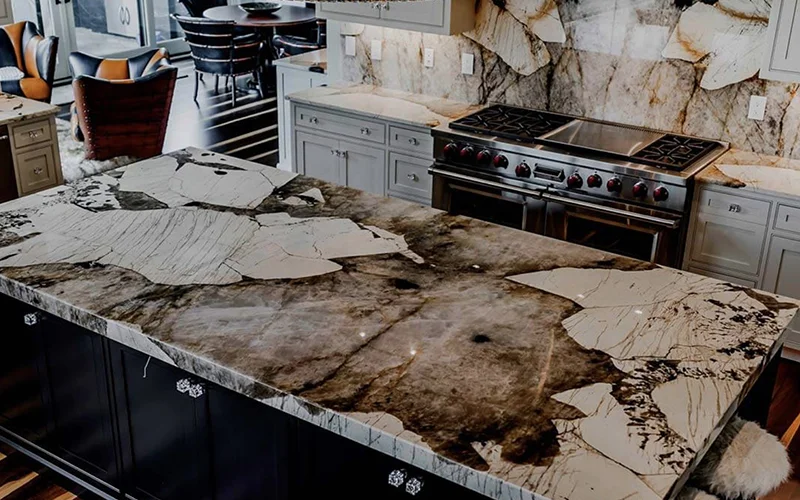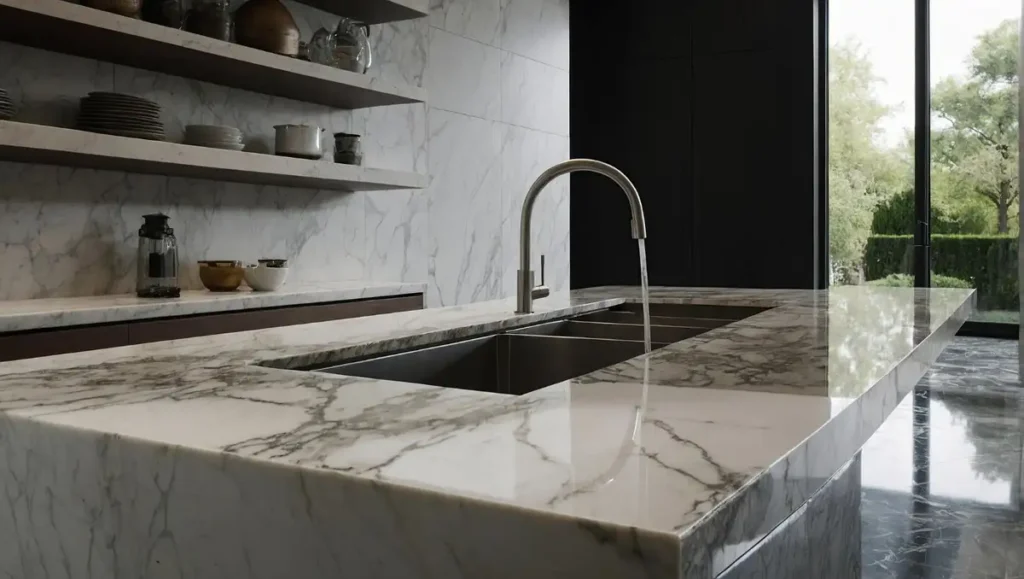


When it comes to designing a modern kitchen, countertops often become the centerpiece of the entire space. Among the wide variety of options available today, two standout choices continue to spark debate: Stainless Steel vs Granite Countertop. Both materials offer unique qualities, aesthetics, and practical benefits, but they also bring completely different vibes into a kitchen. While stainless steel exudes an industrial, sleek, and contemporary look, granite delivers the timeless elegance of natural stone.
In Ontario homes, where kitchen design plays a significant role in property value and lifestyle, choosing between these two options is more than just a matter of taste. It’s about creating harmony between functionality, design, and long-term investment.
Stainless steel countertops have long been associated with professional kitchens, restaurants, and high-performance cooking environments. Over the last decade, however, they’ve made their way into modern residential homes, particularly in spaces that embrace minimalism, industrial loft styles, or ultra-modern interiors.
Sleek and Modern Look: The reflective, polished surface instantly makes a kitchen appear cleaner, brighter, and more futuristic.
Seamless Surfaces: Unlike stone countertops, stainless steel can be fabricated in one continuous sheet, minimizing seams and joints for a smooth finish.
Matches Appliances: In most modern kitchens, stainless steel is already a staple in refrigerators, ovens, and dishwashers. Extending that finish to the countertop creates a cohesive and professional aesthetic.
Industrial Chic: This material conveys an urban, edgy character, perfect for homeowners who want their kitchen to feel like a high-end restaurant.
Yet, stainless steel can also feel cold or clinical to some homeowners. It works best when paired with warm materials such as wood cabinetry, soft lighting, or natural elements to balance its sharpness.
Granite has been a go-to material for decades, and for good reason. As a natural stone, each slab of granite is completely unique, offering variations in color, veining, and texture. This makes it an appealing option for homeowners who value individuality and craftsmanship.
Timeless Beauty: Granite brings a touch of luxury that never goes out of style. Its natural beauty complements both traditional and contemporary kitchen designs.
Wide Range of Colors: From subtle whites and grays to dramatic blacks, greens, and blues, granite offers a wide spectrum of options.
Adds Warmth: Unlike the industrial coolness of steel, granite introduces a sense of earthiness and warmth into a kitchen.
Luxury Statement: Granite countertops have long been associated with upscale homes, adding instant resale appeal.
While granite delivers unparalleled beauty, it does come with variations in quality and requires more consideration during selection and installation compared to stainless steel.
In Ontario, kitchen design trends often balance modern functionality with natural charm. This is why both stainless steel and granite remain popular, but for very different reasons.
Urban Ontario Homes: Condos and downtown lofts often favor stainless steel for its streamlined, minimalist aesthetic that pairs well with glass, concrete, and modern cabinetry.
Suburban and Traditional Homes: Granite is the preferred choice in larger family homes where warmth, individuality, and natural beauty take priority.
Ultimately, the choice between stainless steel and granite countertops boils down to lifestyle and design preference. Do you want a space that feels cutting-edge, industrial, and ultra-clean, or one that feels warm, luxurious, and rooted in nature?

When comparing Stainless Steel vs Granite countertop options, the conversation quickly shifts from aesthetics to performance. After all, your kitchen is a highly functional space that demands durability, hygiene, and ease of use. Let’s break down how each material performs in daily life and what homeowners in Ontario should consider.
Stainless Steel: Resistant to heat, stains, and most forms of impact. However, it can be prone to scratches and dents over time, especially if you’re using heavy cookware directly on the surface. That said, many homeowners appreciate the “patina” that develops with use, which enhances its industrial charm.
Granite: Naturally hard and resistant to heat. It is less likely to dent or warp compared to stainless steel. With proper sealing, granite resists scratches and chips quite well, making it a long-lasting choice. However, sharp impacts (like dropping a heavy pan) can sometimes cause chipping at the edges.
Stainless Steel: Excellent at handling hot pots and pans directly. Since it is non-porous and conductive, you don’t need to worry about heat damage.
Granite: Also strong against heat, but experts recommend using trivets or pads to avoid long-term thermal shock that could cause cracks.
Stainless Steel: Easy to clean with mild soap and water. Its non-porous surface resists bacteria growth, making it an ideal hygienic surface for busy kitchens. However, fingerprints and smudges are more visible, meaning frequent wiping may be necessary.
Granite: Requires periodic sealing to maintain its stain resistance. Once sealed, it’s relatively low-maintenance, and simple cleaning with gentle products is sufficient.
Stainless Steel: Can last for decades if maintained properly. Its modern industrial appeal often suits commercial-style kitchens or contemporary homes. However, some buyers may not appreciate its utilitarian look, which could affect resale value in traditional markets.
Granite: Highly valued in Ontario’s housing market, granite countertops often add resale value because of their natural beauty and timeless appeal.
|
Feature |
Stainless Steel Countertop |
Granite Countertop |
|---|---|---|
|
Scratch Resistance |
Moderate – prone to scratches |
High – with proper sealing |
|
Heat Resistance |
Excellent |
Very Good (with caution) |
|
Hygiene |
Non-porous, very sanitary |
Needs sealing, then sanitary |
|
Maintenance |
Easy, but shows smudges |
Requires sealing every 1–2 years |
|
Lifespan |
20–30 years |
30+ years |
|
Resale Value |
Moderate to high (modern homes) |
High (classic appeal) |
In summary, stainless steel countertops shine in terms of hygiene and a sleek modern look, while granite countertops excel in natural durability and long-term value. The right choice depends on whether your Ontario kitchen leans toward industrial minimalism or classic warmth.

When choosing between a Stainless Steel vs Granite countertop, design is often just as important as durability. Your countertop is the centerpiece of your kitchen, and the material you select sets the tone for the entire space.
Stainless Steel: Delivers a sleek, reflective surface that pairs perfectly with modern, industrial, and minimalist kitchens. Its seamless edges and uniform tone create a clean, professional look often found in chef-inspired kitchens. However, it can feel cold or clinical if not balanced with warmer design elements such as wood cabinetry or warm lighting.
Granite: Known for its unique veining and natural variations, granite adds depth, character, and warmth to a kitchen. No two slabs are identical, meaning your countertop will always be one-of-a-kind.
Stainless Steel: Limited mainly to silver/metallic tones. The finish can vary (brushed, matte, or polished), which slightly affects reflectivity and fingerprint visibility.
Granite: Offers a wide spectrum of colors — from deep blacks and grays to creamy whites, earthy browns, or even exotic blues and greens. Different surface finishes (polished, honed, or leathered) allow homeowners to customize the level of shine and texture.
Stainless Steel: Fabricated in custom sheets, allowing for seamless countertops and integrated sinks. This creates a smooth, continuous surface that enhances its industrial appeal.
Granite: Requires seams in larger kitchens, though skilled fabricators can minimize their visibility. Many homeowners consider this part of the natural stone’s charm.
Stainless Steel: Best for homeowners aiming for a professional, high-tech, or contemporary aesthetic. It enhances lighting and reflects surrounding colors but can sometimes feel stark.
Granite: Evokes warmth and timeless sophistication. Its organic patterns bring a natural grounding effect to a kitchen, making the space feel inviting and cozy.
|
Design Element |
Stainless Steel Countertop |
Granite Countertop |
|---|---|---|
|
Overall Look |
Sleek, modern, industrial |
Warm, natural, timeless |
|
Color Options |
Limited (silver tones) |
Wide range of natural colors |
|
Surface Variety |
Brushed, matte, polished |
Polished, honed, leathered |
|
Unique Appearance |
Uniform, consistent |
One-of-a-kind natural veining |
|
Integration |
Seamless with sinks/appliances |
May require seams, but adds character |
In short, stainless steel countertops dominate in modern kitchens where a minimalist, seamless look is desired, while granite countertops stand out for homeowners who love the richness and individuality of natural stone.
When deciding between a Stainless Steel vs Granite countertop, budget and long-term value are key factors. Both materials come with unique price ranges, installation costs, and resale benefits.
Stainless Steel: Typically ranges from $80 to $225 per square foot installed. Prices depend on thickness, finish (brushed vs polished), and whether it’s custom-fabricated with integrated sinks or backsplashes.
Granite: Falls within $40 to $200 per square foot installed. The cost varies depending on rarity, color, thickness, and origin of the stone. Exotic slabs tend to be at the higher end of the spectrum.
Stainless Steel: Requires custom fabrication by specialists to ensure seamless installation. This makes it more labor-intensive and potentially pricier than granite.
Granite: Also requires skilled fabrication and installation, especially for large or intricate layouts. However, granite fabricators are widely available, which can make installation more accessible.
Stainless Steel: Very low maintenance — no sealing required, and easy to clean with mild soap. The main expense comes from buffing out scratches or dents if aesthetics matter.
Granite: Requires periodic sealing (usually once a year) to maintain stain resistance. Cleaning is simple, but neglecting sealing may result in higher long-term upkeep costs.
Stainless Steel: Extremely durable and can last decades without losing structural integrity. However, scratches and dents may reduce visual appeal over time, impacting resale desirability in traditional markets.
Granite: Also highly durable, and when maintained properly, it retains its elegance for decades. Its timeless appeal often increases resale value, as natural stone is a strong selling point for homebuyers.
|
Cost Factor |
Stainless Steel Countertop |
Granite Countertop |
|---|---|---|
|
Price Range (per sq ft) |
$80 – $225 |
$40 – $200 |
|
Installation |
Custom fabrication, labor-intensive |
Skilled fabrication, widely available |
|
Maintenance |
Low (no sealing required) |
Requires periodic sealing |
|
Durability |
Extremely durable, but prone to scratches/dents |
Durable, resistant to heat and scratches |
|
Resale Value |
Moderate, niche appeal |
High, broad market appeal |

When choosing between stainless steel vs granite countertop, homeowners must consider the long-term practicality of daily use. While both offer unique strengths, their maintenance requirements and performance in busy kitchens differ.
Stainless Steel Countertops are extremely low-maintenance. A simple wipe with a damp cloth or mild cleaner keeps the surface spotless, making them ideal for households that prioritize convenience. They are naturally resistant to bacteria and mold, a huge advantage in food prep areas. However, scratches and fingerprints are common; although they don’t compromise performance, they can affect the surface’s sleek appearance. Some homeowners embrace this “lived-in” patina as part of the industrial aesthetic.
Granite Countertops, in contrast, demand a bit more care. They require sealing every 1–2 years to prevent staining from oils, wine, or acidic foods. Daily cleaning with mild soap and water is usually enough, but harsh chemicals can dull the stone’s shine. Granite is resistant to scratches and heat, but homeowners must avoid leaving acidic spills unattended, as they can etch the surface.
From a practical perspective, stainless steel wins for minimal upkeep, while granite rewards homeowners willing to invest a little more effort for long-lasting natural beauty. The choice often comes down to lifestyle: those who want fuss-free functionality may lean toward stainless steel, while those who value timeless luxury may prefer granite despite the extra care.
Both stainless steel vs granite countertop options bring distinct advantages to the modern kitchen. Stainless steel is sleek, ultra-hygienic, and perfect for homeowners seeking a contemporary, industrial style with minimal upkeep. On the other hand, granite delivers unmatched natural beauty, durability, and timeless elegance that enhances property value.
The decision ultimately depends on lifestyle, budget, and design preference. If you want a bold, professional look with easy maintenance, stainless steel may be your winner. But if you dream of a warm, luxurious kitchen that highlights natural stone strength, granite remains a classic choice.
Whichever material you choose, investing in a high-quality countertop ensures not just functionality but also a lasting style statement in your home.